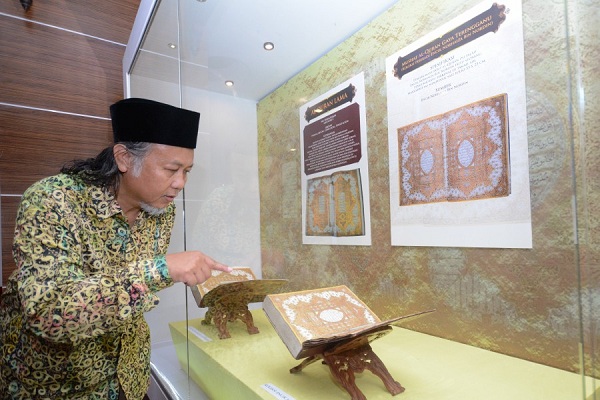Proud Owner of Prized Quranic Manuscript in Malaysia

The other copy is kept in Terengganu Museum.
Norhaiza Nordin, 56, who purchased the manuscript from a non-Muslim trader in 2003 for RM40,000, said he did do as he did not want it to “leave” the state.
He said what attracted him most to the copy was the various gold carvings on each parchment, which looked very similar to Terengganu-based carvings.
“Actually I didn’t have the money (at the time), but somehow, I suddenly received a long-overdue payment for work I had done previously. I used it to buy it (the Quran) two days before the promised deadline with the dealer.
“After observing the illumination motif on each page of the Quran, I found that it has the same features as the carvings on the head of the keris and the Malay carvings of the state,” said the engraving specialist, who also illustrates technical, decorative and contextual drawings.
The Quran manuscript, which is said to be dated between the 1820s and 1850s, had been loaned to the Terengganu Museum for display during an exhibition last month.
The native of Kampung Raja, Besut, said the fascinating manuscript also showcased the lofty status of the Quran, and the amazing art of highly-skilled Terengganu Malay artists, impossible to find today.
According to Norhaiza, based on his experience as an engraver, it would have taken an engraver three months to complete each parchment of the manuscript.
“I cannot imagine how hardworking the engraver of the Quran must have been. On top of that, it was all done manually, with such fine carving combining interesting colors.
“At that time, there were no printing machines, so we don’t know how color was used in the manuscript, and to this day, no experts have determined what ingredients were used to produce the colors which adorn the manuscript.
"For example, the color blue may have been obtained from ‘lapis lazuli’ (a deep-blue metamorphic rock used as a semi-precious stone that has been prized for its intense color) obtained from Afghanistan,” he said.
Norhaiza believes that Terengganu had once been a center for producing the Quran, although the authenticity of the claim couldn’t be ascertained, and that it was surprising why such Quranic publications had been discontinued.
He said he often lends the manuscript to experts for research purposes, hoping that the art used in the manuscript could be reproduced.
With many quarters offering to purchase the manuscript from him, Norhaiza said he has had to refuse them for personal reasons.
“It is not because the prices offered were low. It is more on the basis of my responsibility to preserve this country’s treasures, and I’m proud to be able to do so,” he said.
Source: Bernama
 Most Commented
Most Commented 


